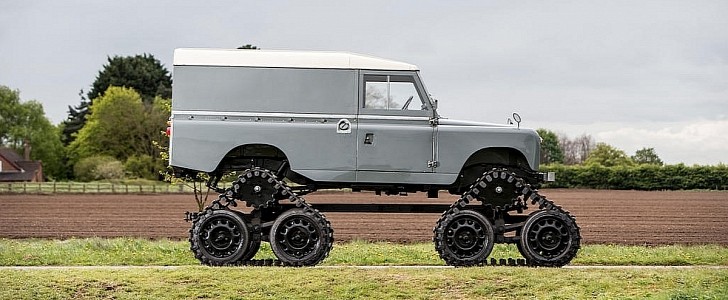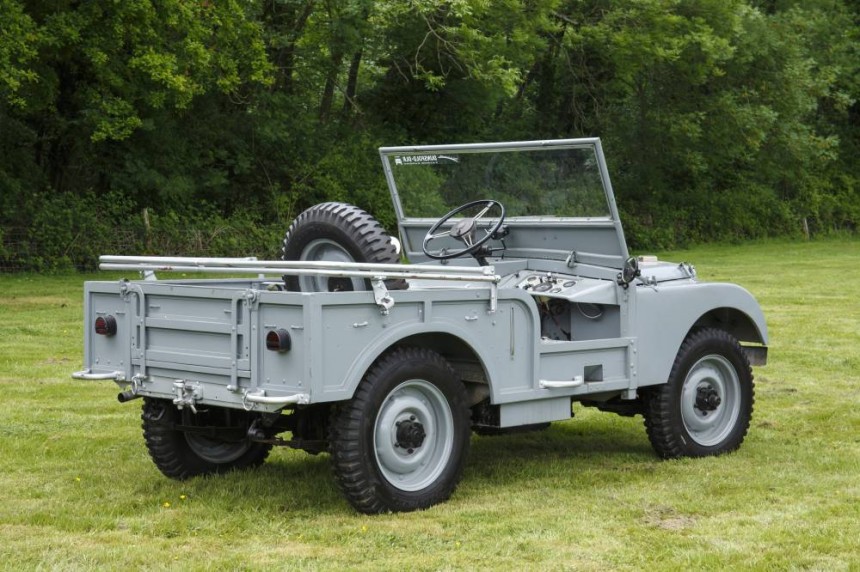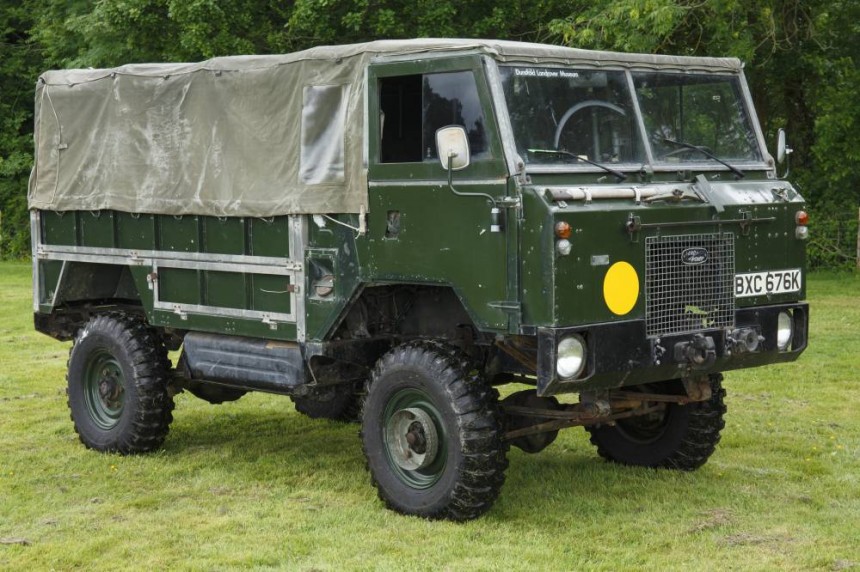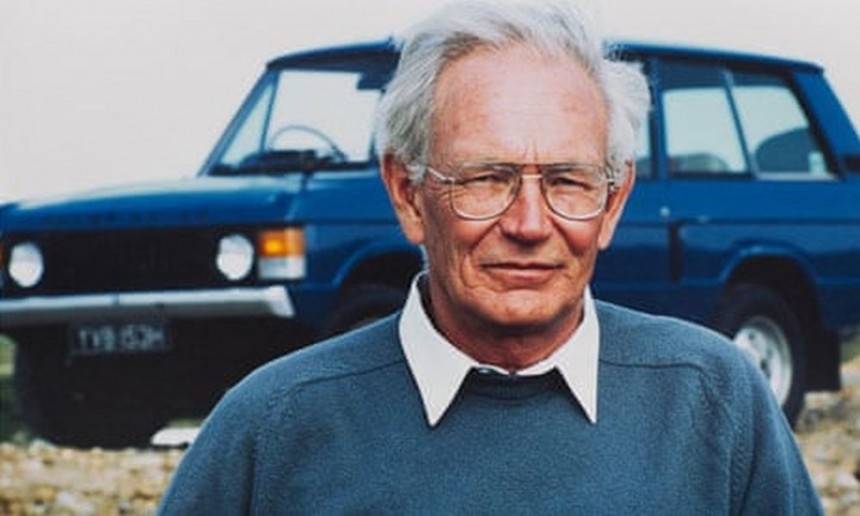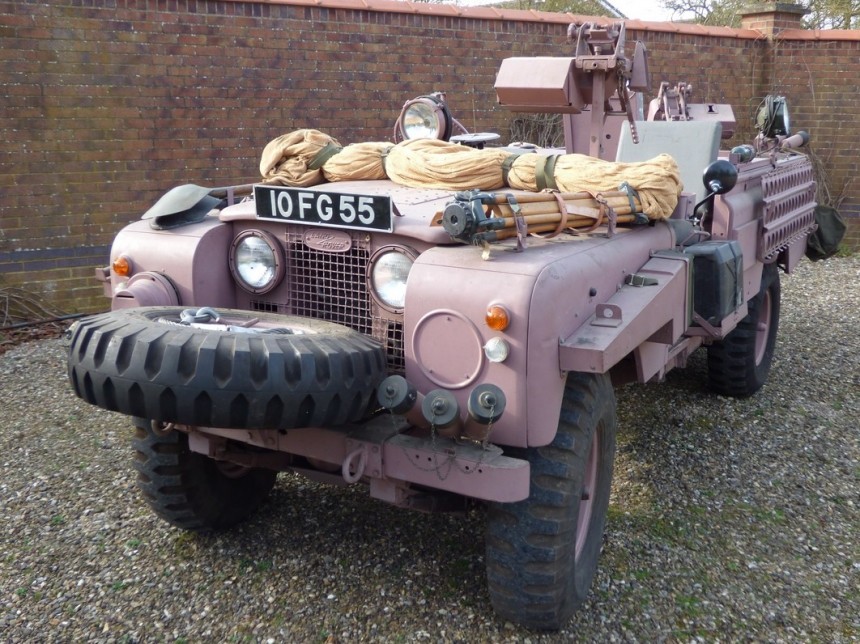Land Rover is one of the most successful SUV manufacturers in the world, having developed a long list of iconic SUVs and military vehicles.
We'll never forget the Land Rover Series, the Defender, and the Range Rover, but the company was also built on facts you may not know about. Here are 10 of them.
The first Land Rover had a center-mounted steering wheel - The first Land Rover, the Series I, went into production in 1948. Designed to compete with the Willys Jeep, the prototype was actually built on a Jeep chassis.
But unlike its American rival, it had the steering wheel mounted in the center. The distinctive feature proved impractical and was dropped before production. The central driving position was made popular almost 50 years later by the McLaren F1 supercar.
Land Rover didn't exist as a company until 1978 - The Land Rover was born under the Rover Company, an automobile brand based in Solihull. Land Rover didn't become a separate entity until 1978, 30 years after the Series I debuted. Land Rover Ltd. was established by British Leyland.
It offered tank tracks as a factory option - As ridiculous as it may sound, this actually happened in the 1950s while the Series II was in production. It was originally developed by Cuthbertson, a Scottish manufacturer of rubber tracks.
Created for farmers forced to work in an uneven landscape, the Cuthbertson conversion became a factory option. Only a few of these tracked utility vehicles survived to this day.
The defender 110 was conceived to qualify as a bus to avoid taxes - Apparently, Land Rover didn't like paying taxes and went to great lengths to make sure its buyers didn't have to either. So it designed the Defender 110 to accommodate up to 12 people, which qualified it as a bus in Great Britain. Sure, buses didn't have tax-exempt status, but these were lower than a regular passenger vehicle.
It built quite a few forward control vehicles - This is a relatively unknown chapter in the company's history that started in 1962 with the Series IIA FC, which was used mostly as a fire and recovery truck. The second cab-over-engine vehicle was introduced in 1966 as the IIB FC.
These civilian trucks were followed by the 101 Forward Control, a military-spec vehicle that remained in use for decades. Land Rover's final attempt came in the 1980s with the Llama, based on a Defender 110 chassis.
The latter wasn't developed beyond prototype form as Land Rover failed to win a contract with the British Ministry of Defence.
A Range Rover was the first car to be exhibited in the Louvre - Upon its release in 1969, the first-generation Range Rover was exhibited in the Musee du Louvre as an "exemplary work of industrial design." It was the first-ever vehicle showcased in the world's most-visited museum, home to the Mona Lisa and the Venus de Milo.
The first Range Rover SUV was originally called Velar - The Velar made its commercial debut in 2017, but the nameplate was first used in the late 1960s when the very first Range Rover was developed. Derived from the Italian "velare," meaning "to veil" or "to cover," Rover used the name as a decoy for registering pre-production Range Rovers.
Registered in London, the Velar company produced 26 development vehicles (some sources claim up to 40 SUVs were made).
The guy who designed the Range Rover made jet engines - Charles Spencer King, the mastermind behind the Range Rover, joined Rover after a three-year stint at Rolls-Royce, where he worked on jet and gas turbine engines.
He actually moved to Rover because the company wanted to experiment with a gas turbine car and in 1950 he successfully demonstrated the JET 1. In 1952, he drove the turbine-powered Rover to 152 mph (245 kph).
The world's only pink military vehicle is based on a Land Rover - Land Rovers were very popular as military vehicles. They were used by governments around the world since the early days and most designs soldiered on for decades with only small upgrades. The "Pink Panther," famous for its being painted almost entirely in pink, was based on the Land Rover Series IIA.
Heavily modified by Marshall for the Special Air Service (SAS), the "Pink Panther" was used in the Persian Gulf area. The mauve-like pink may seem a strange color for desert camouflage, but at the time it was considered an easy hue to disguise in the sand, especially at dawn and dusk.
It built the first monster truck - People seem to think that the monster truck was born in the U.S., but Land Rover actually invented the concept in the 1950s. That's when the British Forestry Commission demanded a road-going vehicle that could easily tackle deep mud puddles and Land Rover answered by putting heavy-duty Studebaker axles and tractor tires on a Series IIA.
The first Land Rover had a center-mounted steering wheel - The first Land Rover, the Series I, went into production in 1948. Designed to compete with the Willys Jeep, the prototype was actually built on a Jeep chassis.
But unlike its American rival, it had the steering wheel mounted in the center. The distinctive feature proved impractical and was dropped before production. The central driving position was made popular almost 50 years later by the McLaren F1 supercar.
Land Rover didn't exist as a company until 1978 - The Land Rover was born under the Rover Company, an automobile brand based in Solihull. Land Rover didn't become a separate entity until 1978, 30 years after the Series I debuted. Land Rover Ltd. was established by British Leyland.
Created for farmers forced to work in an uneven landscape, the Cuthbertson conversion became a factory option. Only a few of these tracked utility vehicles survived to this day.
The defender 110 was conceived to qualify as a bus to avoid taxes - Apparently, Land Rover didn't like paying taxes and went to great lengths to make sure its buyers didn't have to either. So it designed the Defender 110 to accommodate up to 12 people, which qualified it as a bus in Great Britain. Sure, buses didn't have tax-exempt status, but these were lower than a regular passenger vehicle.
It built quite a few forward control vehicles - This is a relatively unknown chapter in the company's history that started in 1962 with the Series IIA FC, which was used mostly as a fire and recovery truck. The second cab-over-engine vehicle was introduced in 1966 as the IIB FC.
The latter wasn't developed beyond prototype form as Land Rover failed to win a contract with the British Ministry of Defence.
A Range Rover was the first car to be exhibited in the Louvre - Upon its release in 1969, the first-generation Range Rover was exhibited in the Musee du Louvre as an "exemplary work of industrial design." It was the first-ever vehicle showcased in the world's most-visited museum, home to the Mona Lisa and the Venus de Milo.
The first Range Rover SUV was originally called Velar - The Velar made its commercial debut in 2017, but the nameplate was first used in the late 1960s when the very first Range Rover was developed. Derived from the Italian "velare," meaning "to veil" or "to cover," Rover used the name as a decoy for registering pre-production Range Rovers.
The guy who designed the Range Rover made jet engines - Charles Spencer King, the mastermind behind the Range Rover, joined Rover after a three-year stint at Rolls-Royce, where he worked on jet and gas turbine engines.
He actually moved to Rover because the company wanted to experiment with a gas turbine car and in 1950 he successfully demonstrated the JET 1. In 1952, he drove the turbine-powered Rover to 152 mph (245 kph).
The world's only pink military vehicle is based on a Land Rover - Land Rovers were very popular as military vehicles. They were used by governments around the world since the early days and most designs soldiered on for decades with only small upgrades. The "Pink Panther," famous for its being painted almost entirely in pink, was based on the Land Rover Series IIA.
It built the first monster truck - People seem to think that the monster truck was born in the U.S., but Land Rover actually invented the concept in the 1950s. That's when the British Forestry Commission demanded a road-going vehicle that could easily tackle deep mud puddles and Land Rover answered by putting heavy-duty Studebaker axles and tractor tires on a Series IIA.
